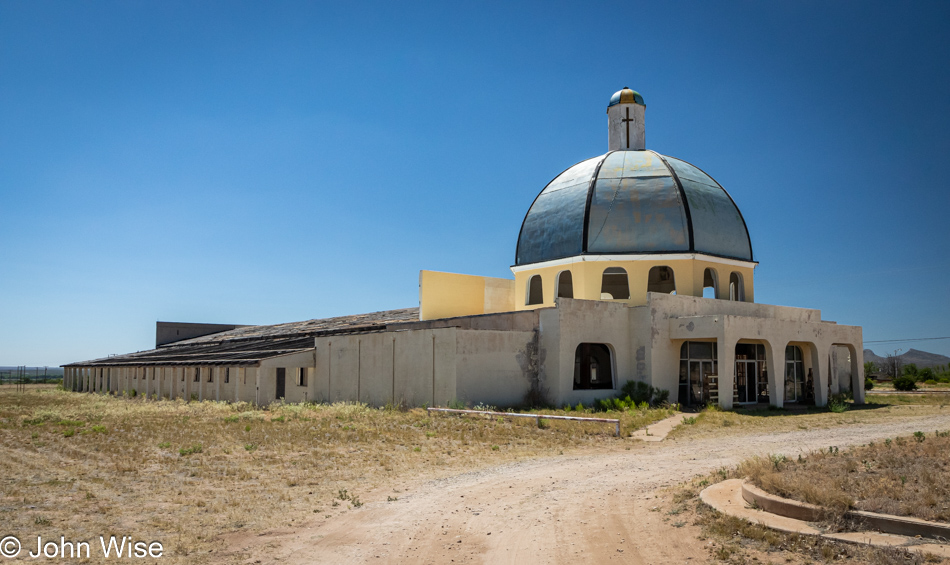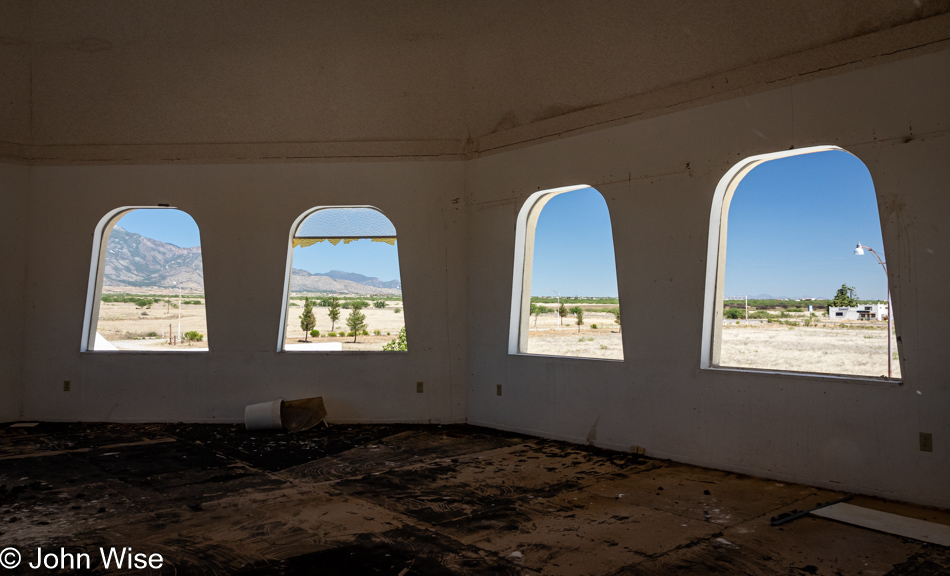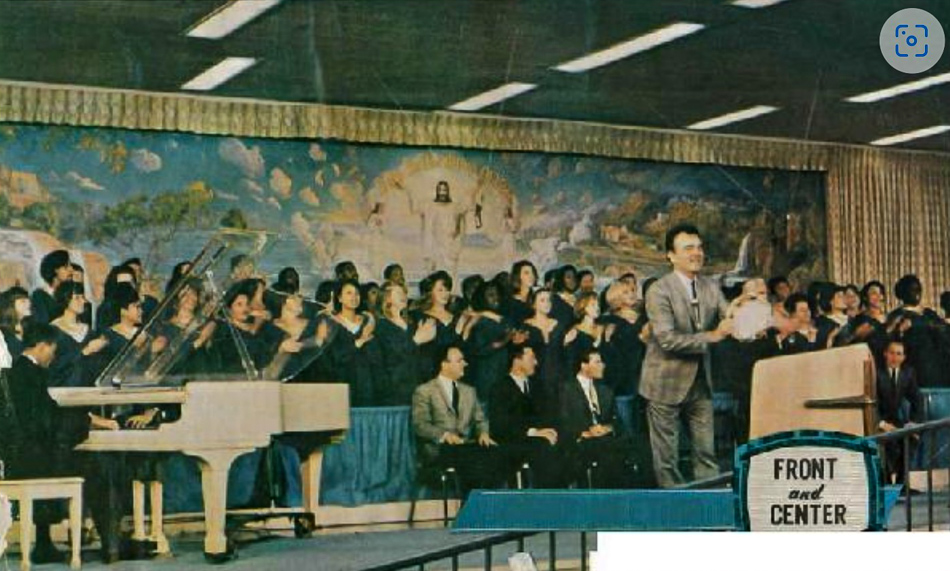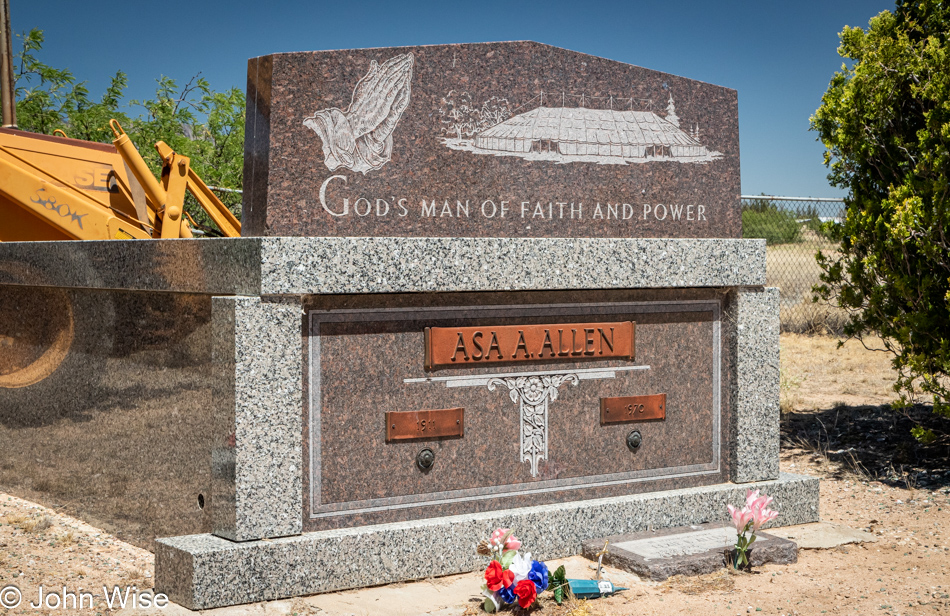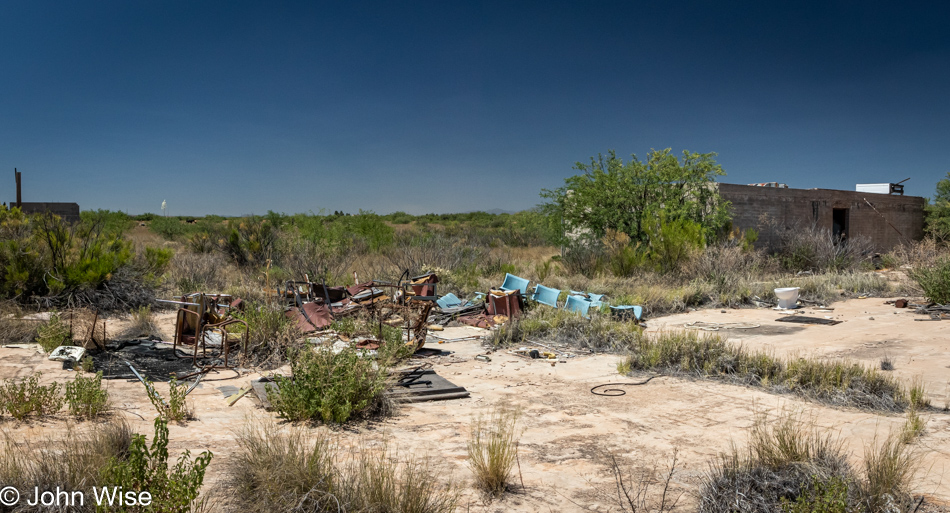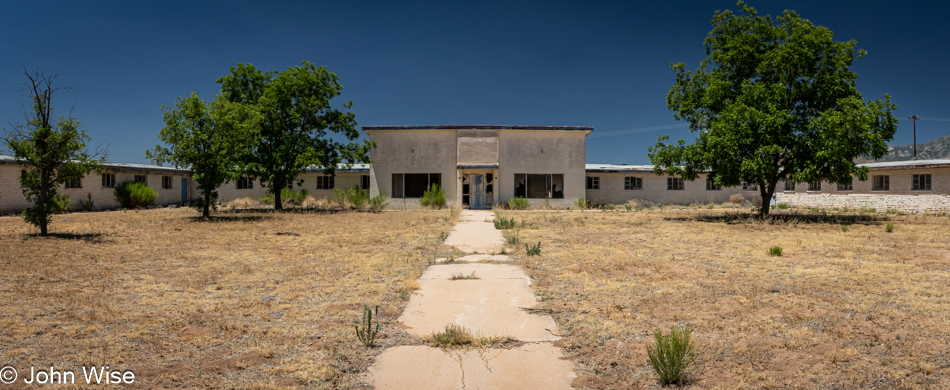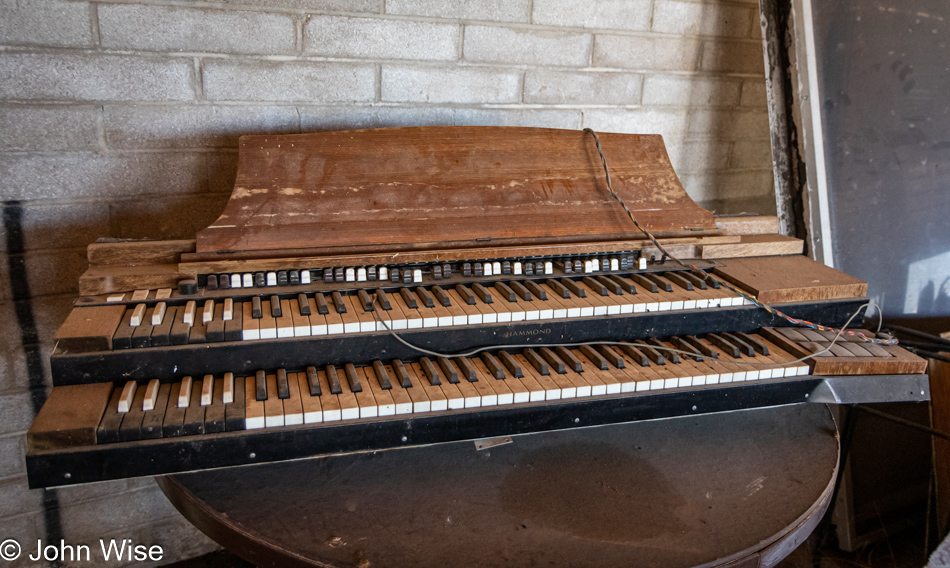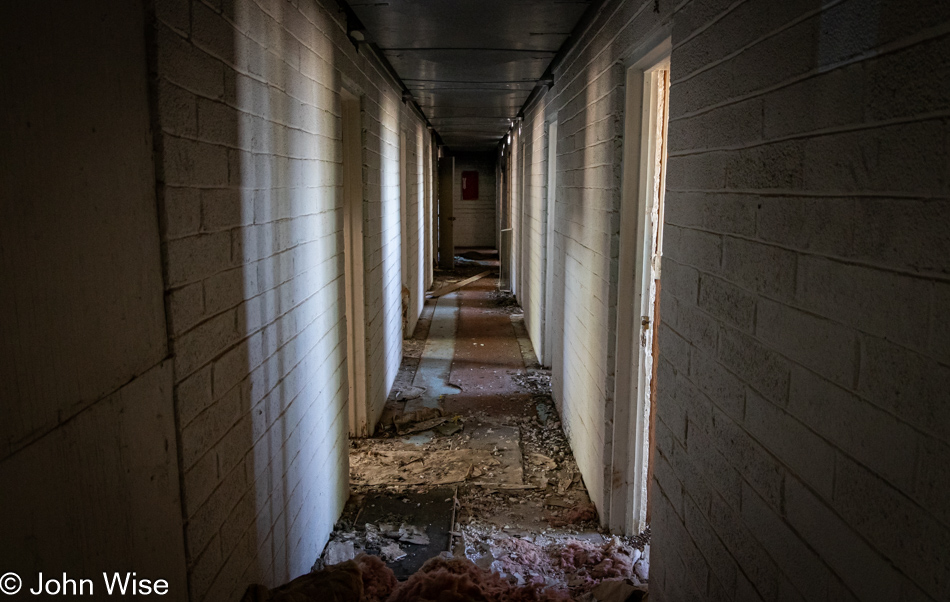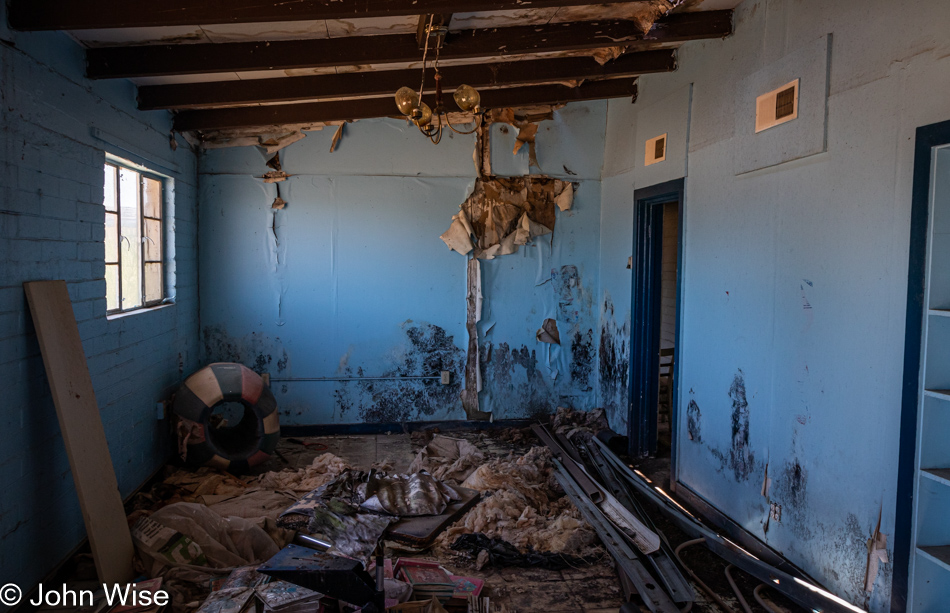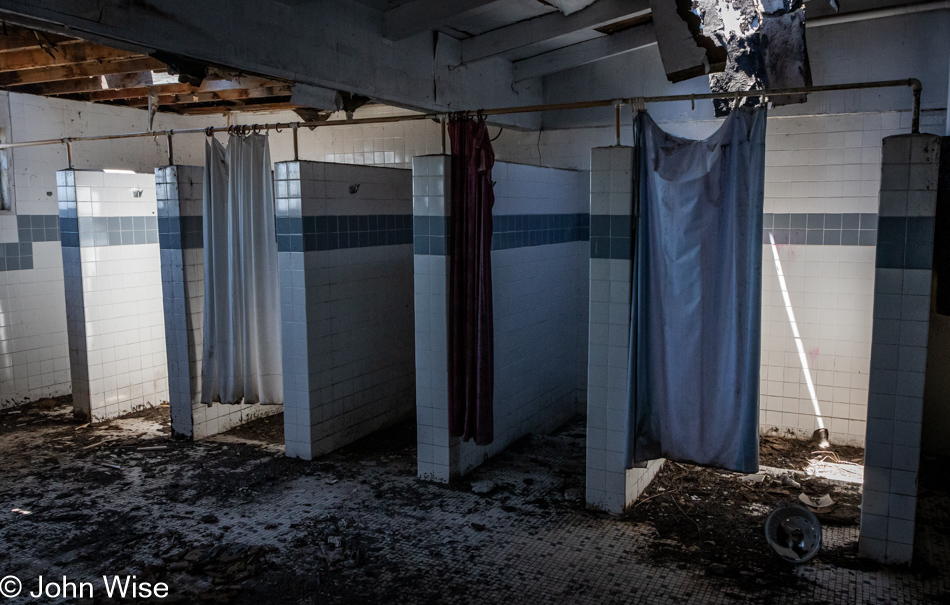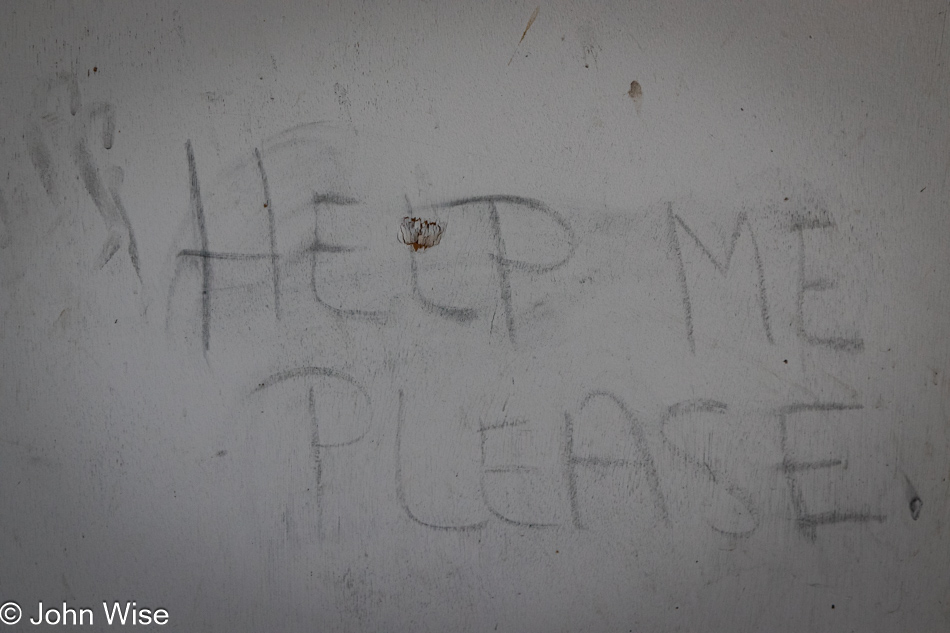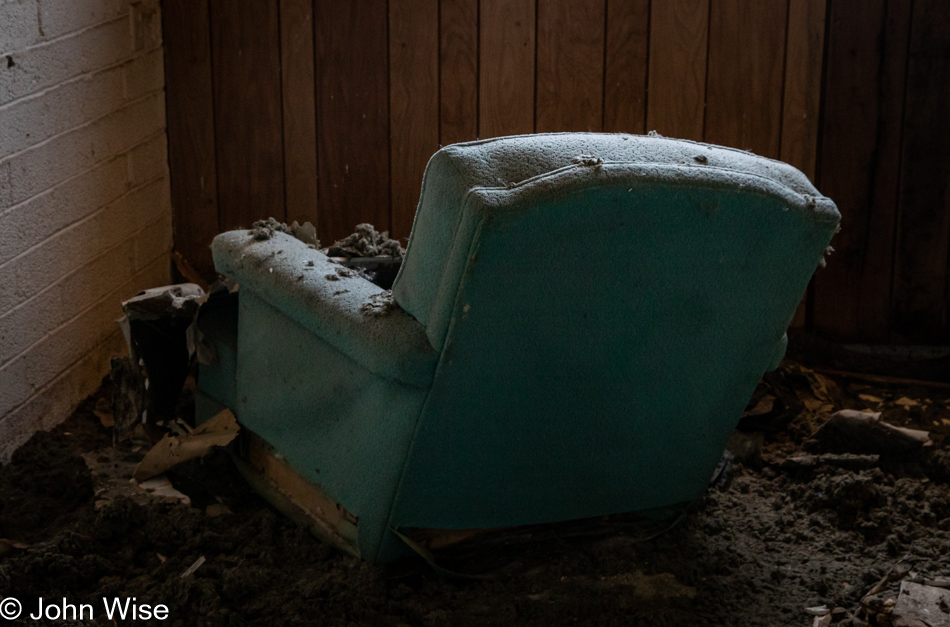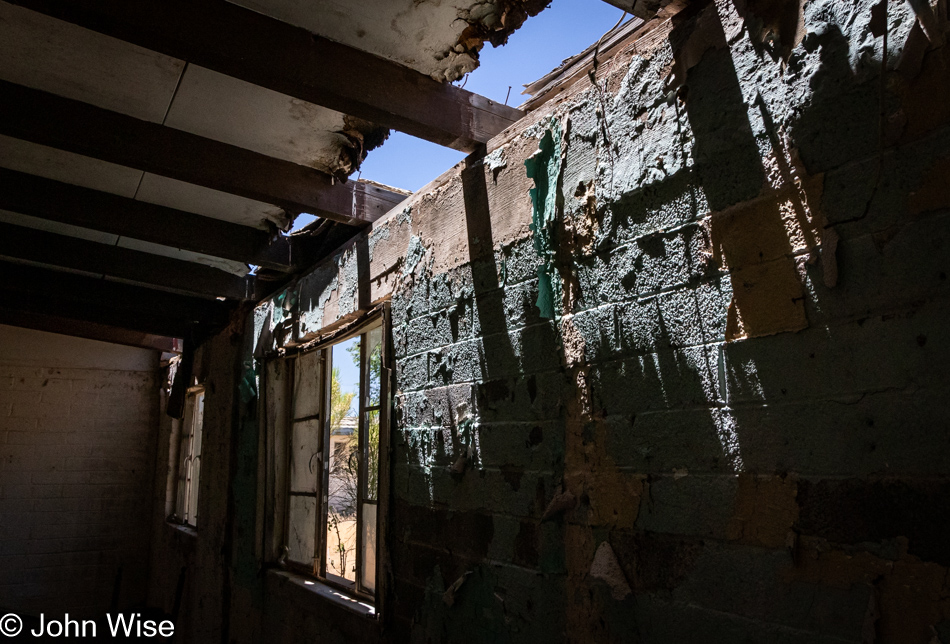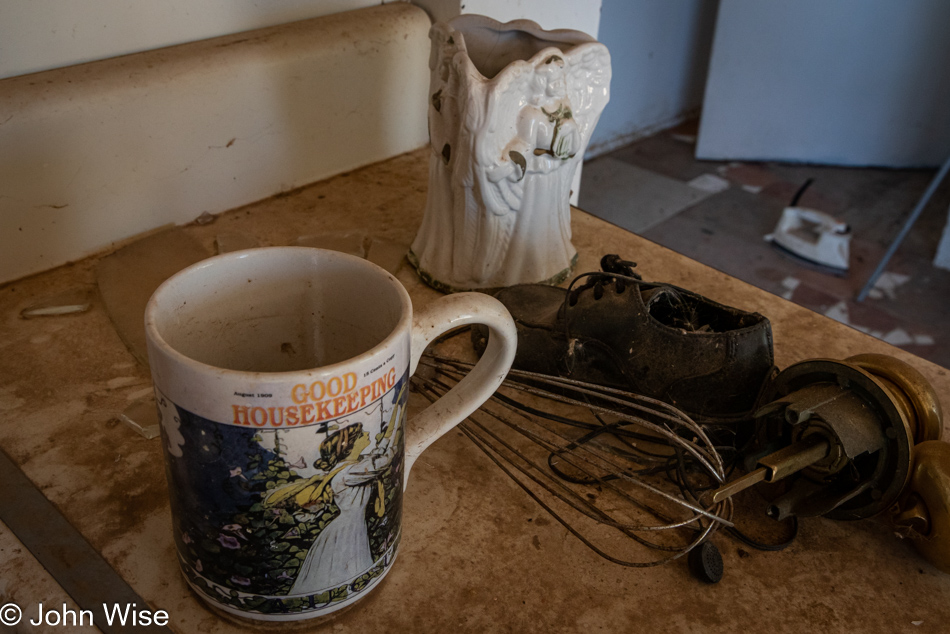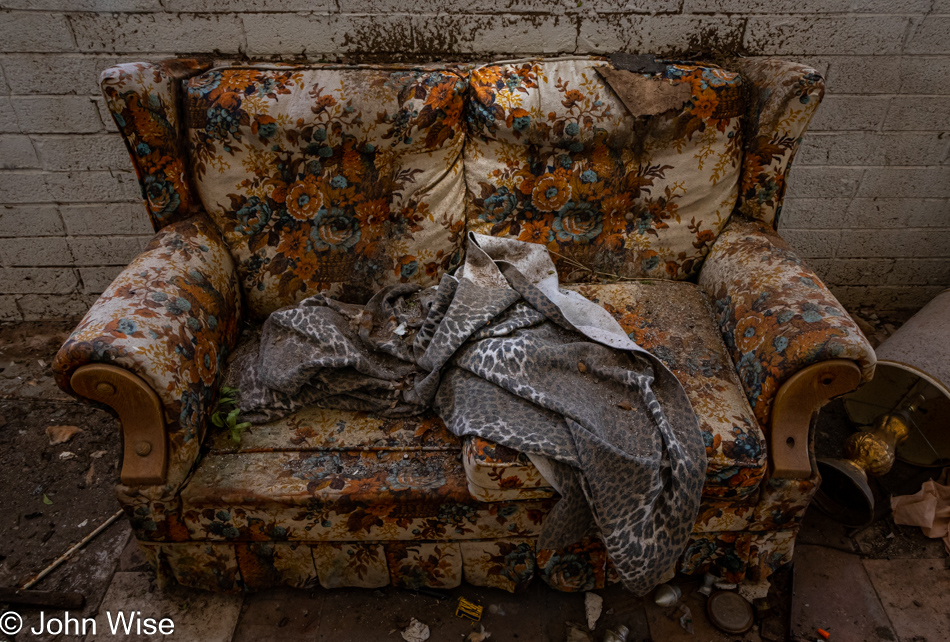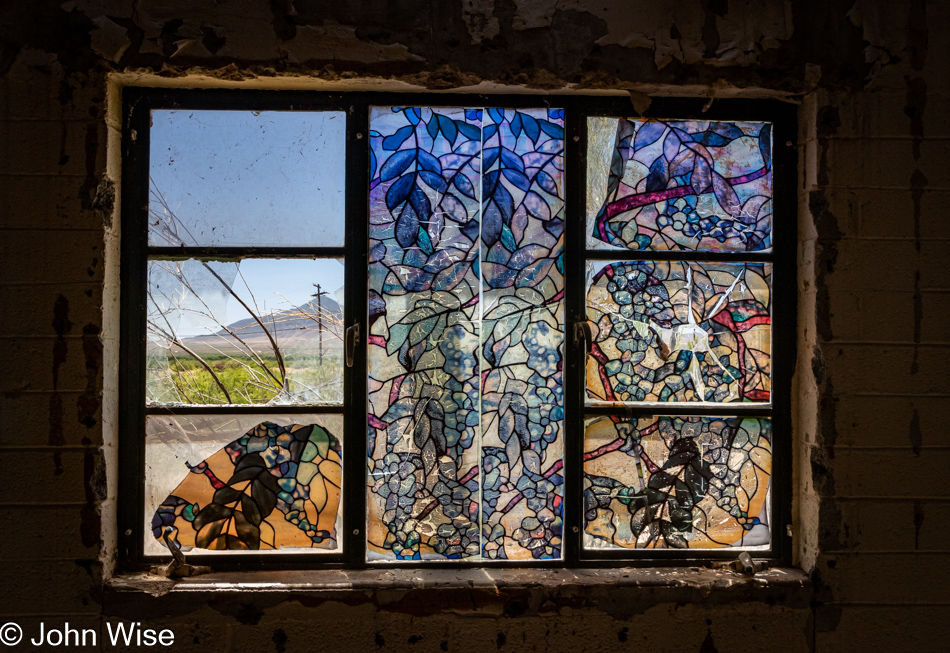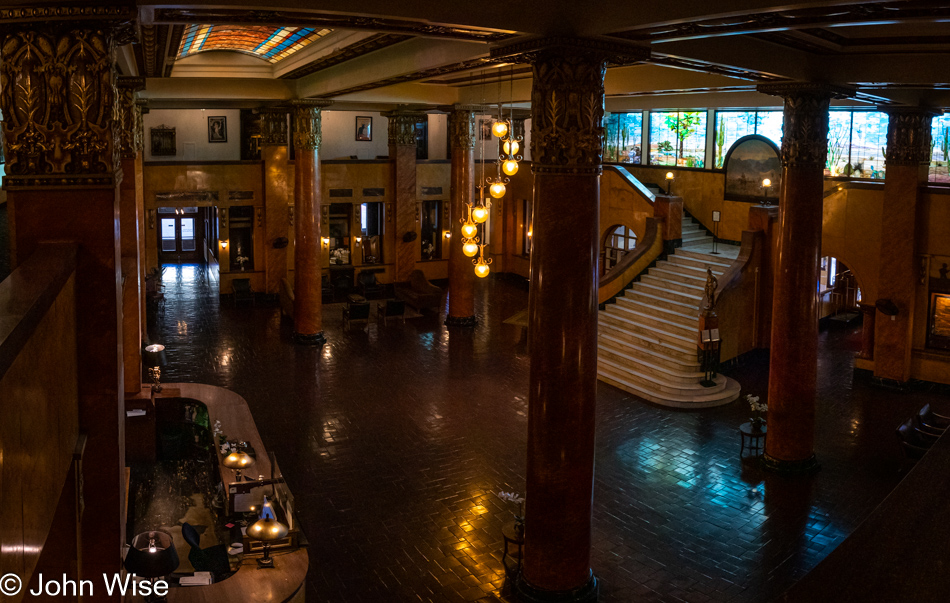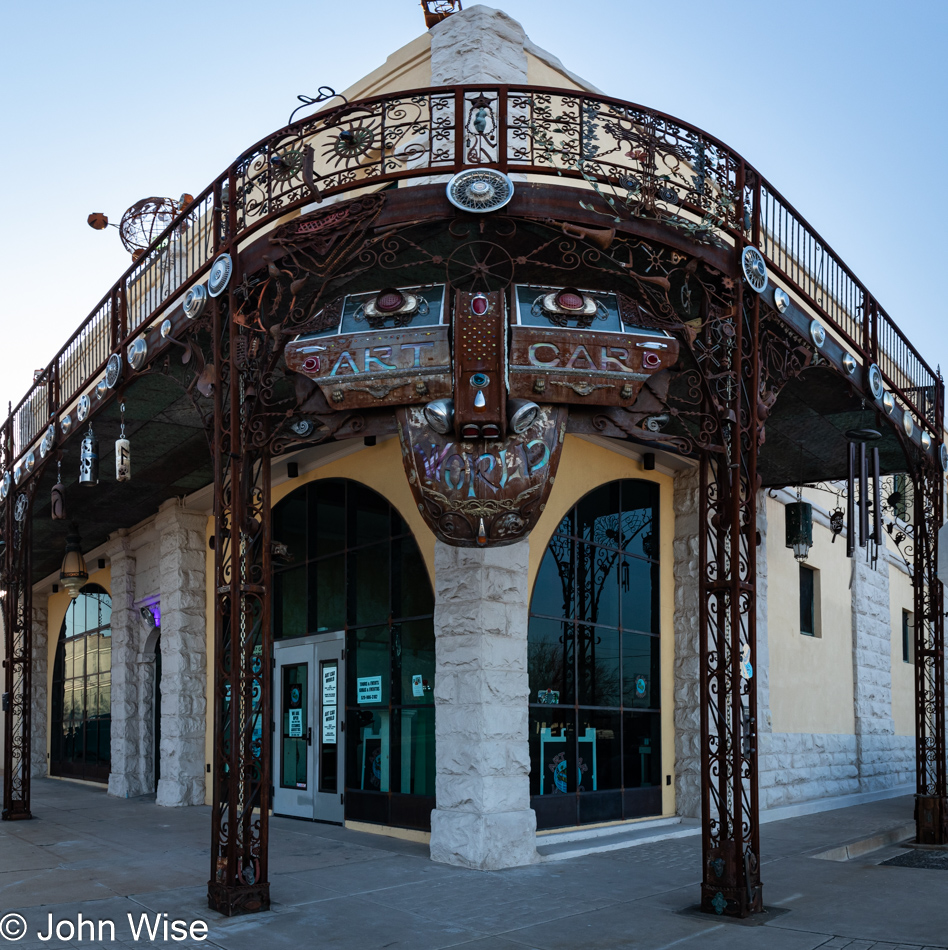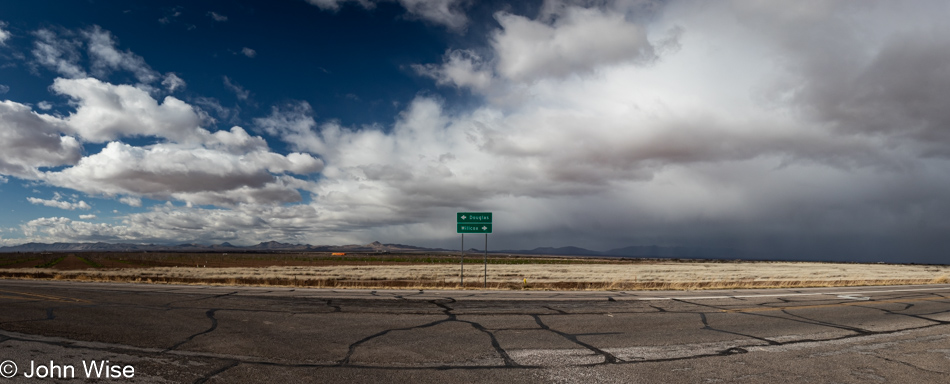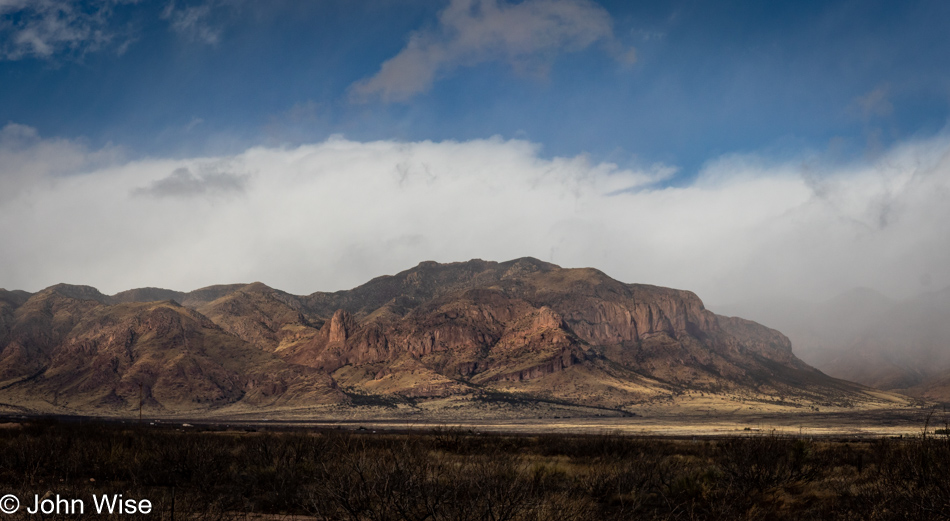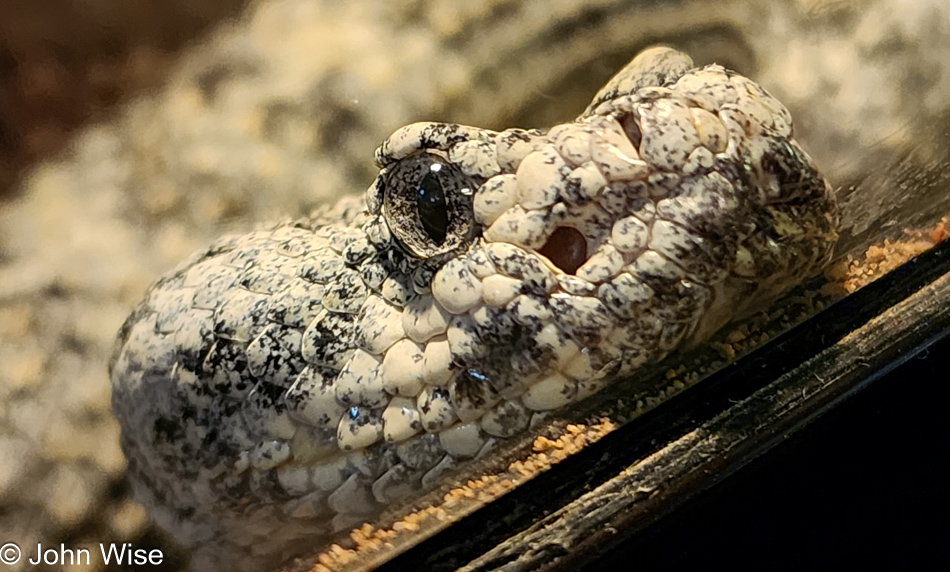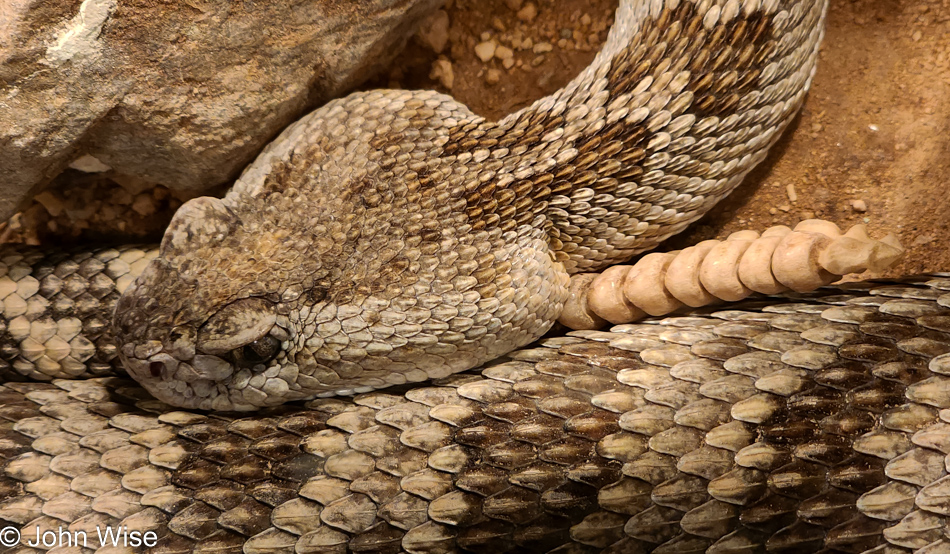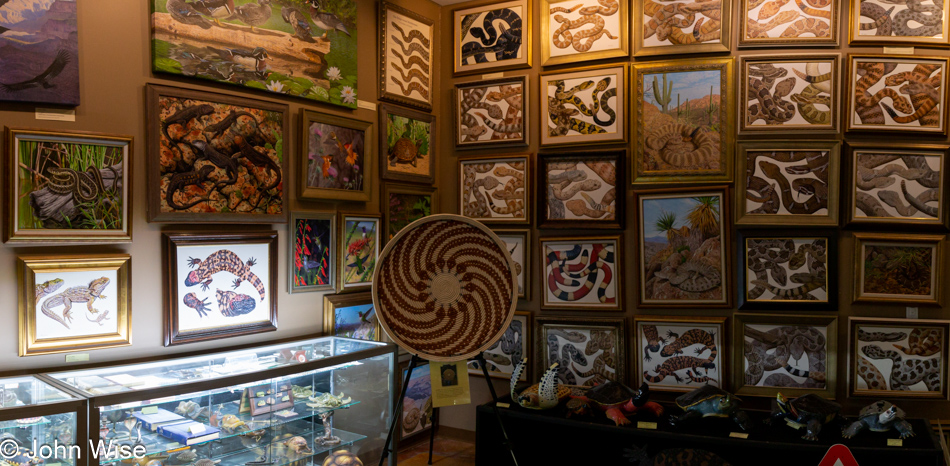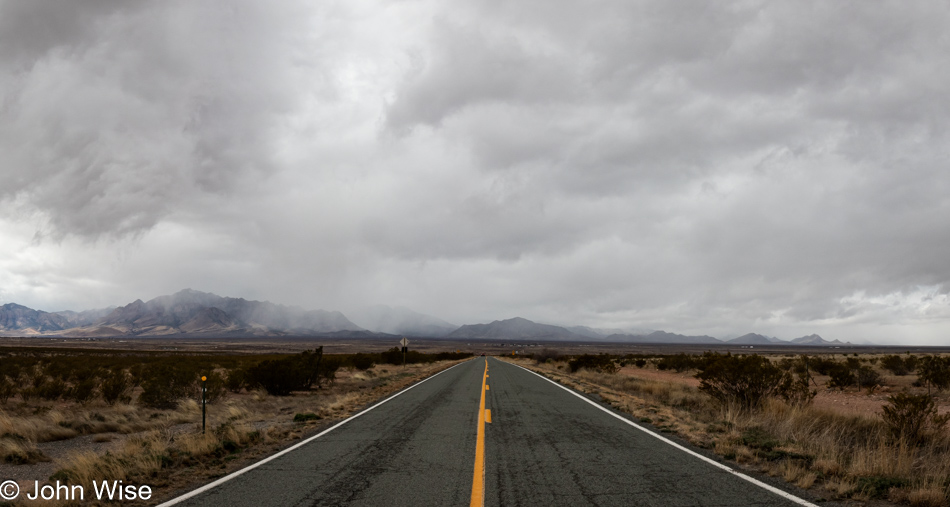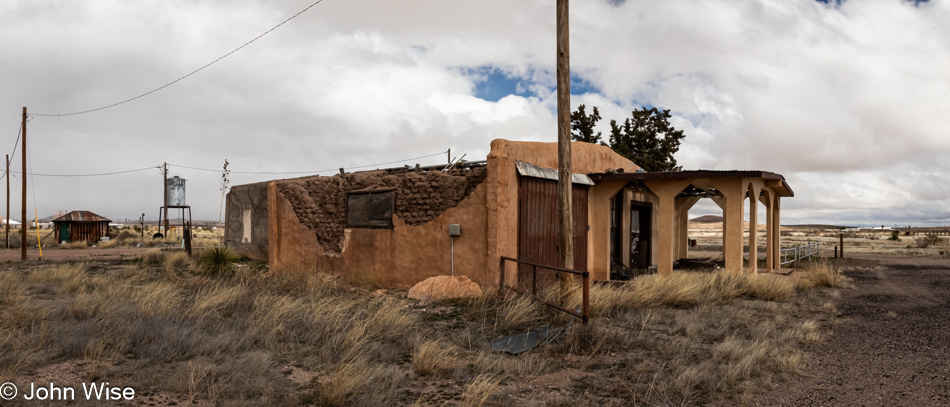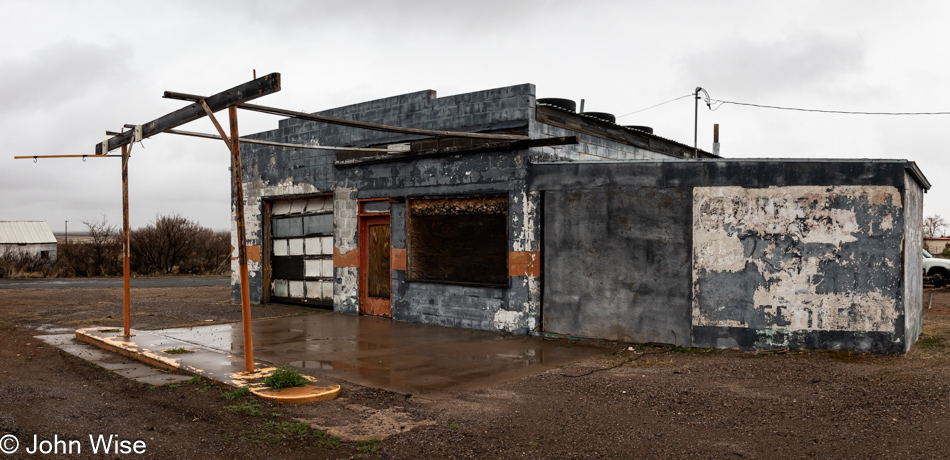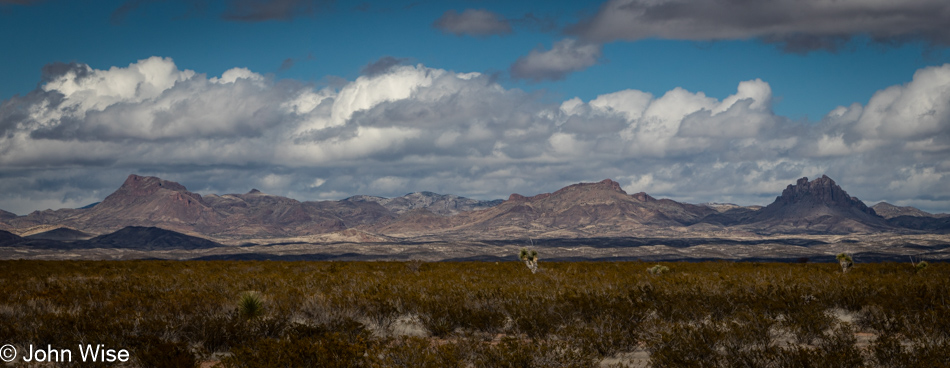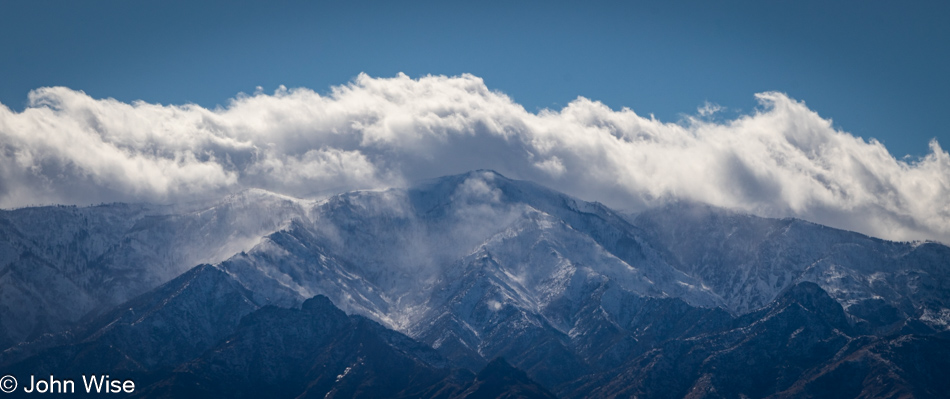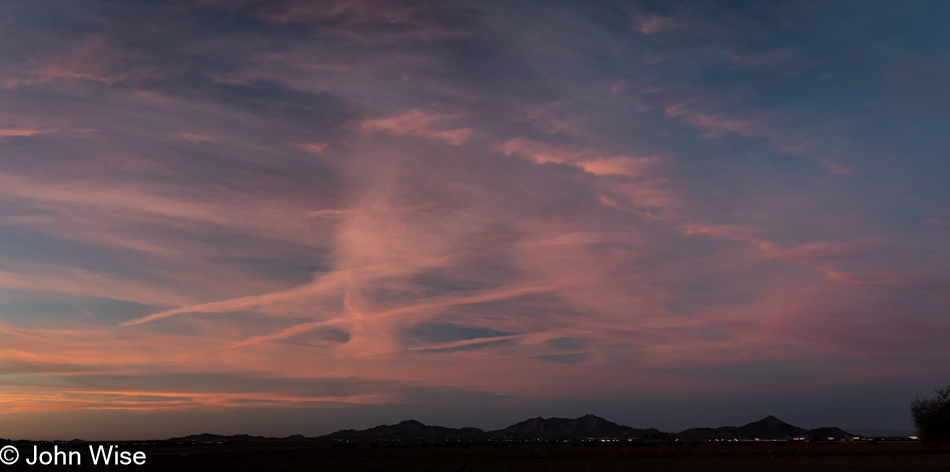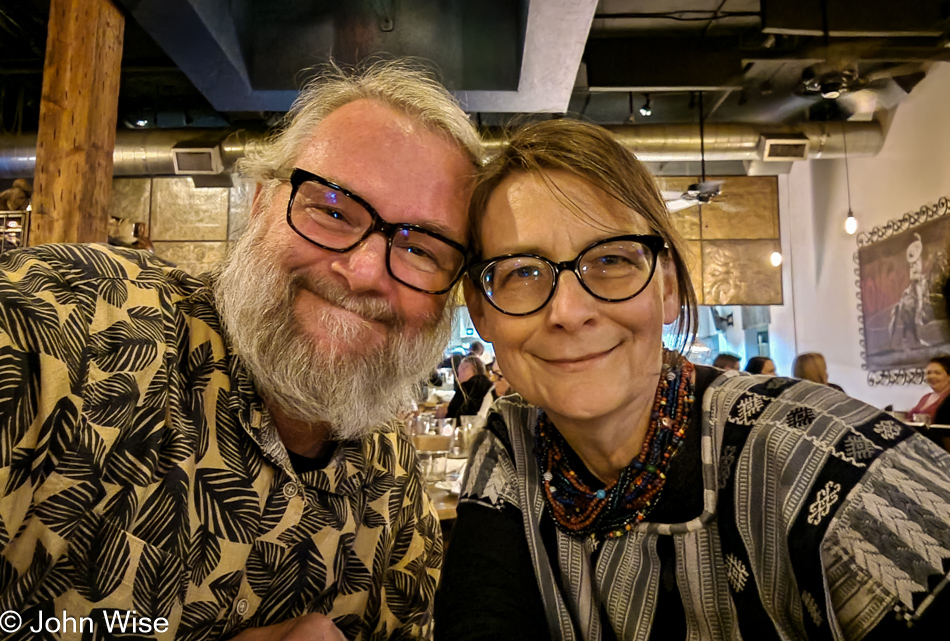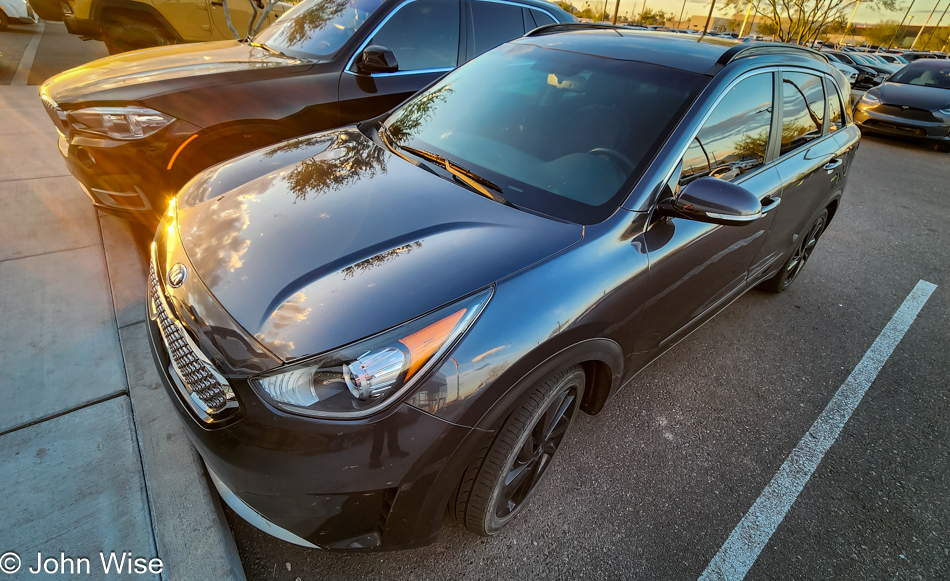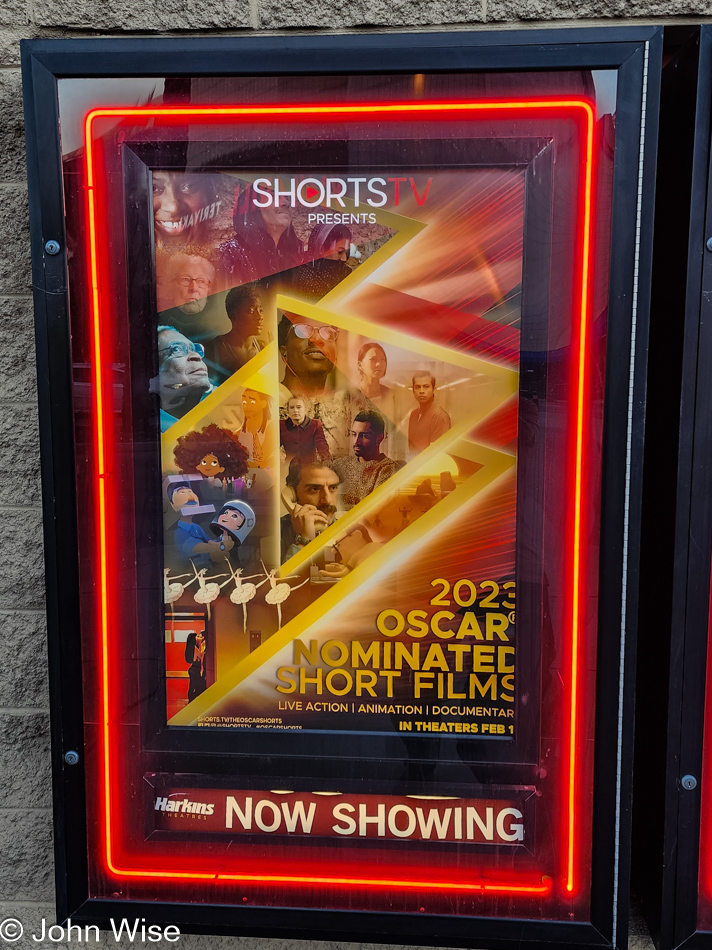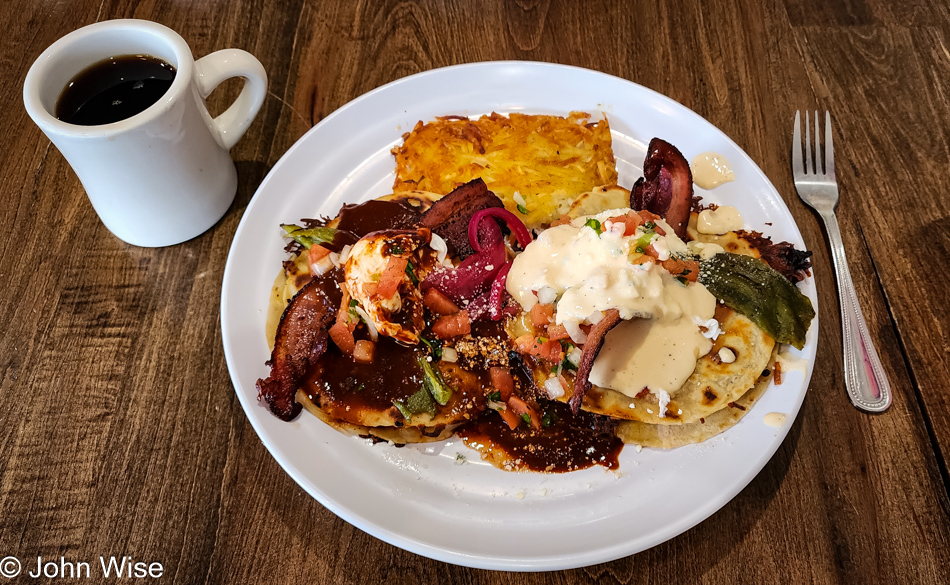
Breakfast entered the charts under the category of “wow” and, for the umpteenth time, triggered the big question: why are we living in Phoenix again? Baja Cafe in Tucson appeared on a number of Best Breakfast” lists. We thought Five Points Market & Restaurant was brilliant, and it was, but Baja Cafe ups the ante with some uniquely inspired creations, such as their variations on eggs benedict. From their menu, I’ll just share their exact description of the dish pictured:
Brisket Caramelo – Grilled crisp Caramelos stuffed with shredded brisket, tomatoes, chorizo, cheddar, and Jack cheese. Topped with two strips of corn husk smoked bacon, fire-roasted diced green chile, and two poached eggs. Finished with a combination of New Mexican red chile sauce and a smoked gouda cheese sauce, pico de gallo, cotija cheese, and pickled onions.
Last night at El Charro, upon hearing us talk about breakfast options in Tucson, our server recommended Baja Cafe and told us that one of his favorites there was the corned beef hash, so Caroline ordered it. We shared both plates and agreed that the corned beef hash was the best we’d ever had, while this play on eggs benedict will hopefully bring us back to try some of the other variations of this otherwise staid dish. After breakfast, it was time to hit the road.
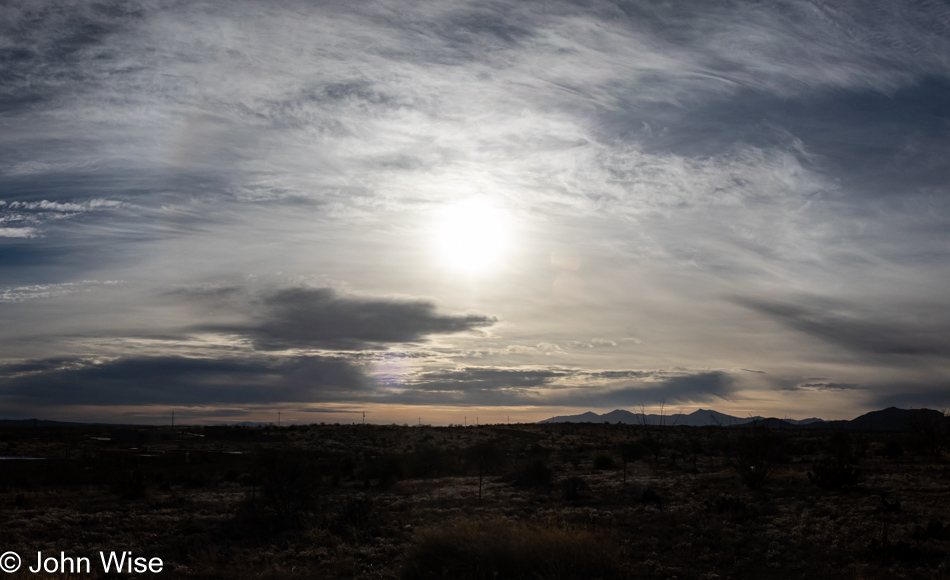
Leaving Interstate 10 in Vail in the direction of Sonoita on Highway 83, there were a couple of glimpses of sun, but for the most part, the sky just grew cloudier.
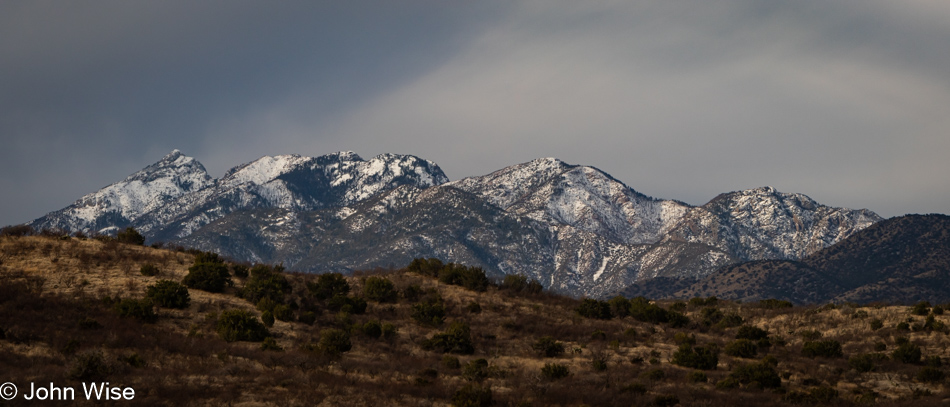
Even before leaving Tucson, we were drawn into the snow-covered mountains surrounding the city, with the exception of the west. The mountains in the other three directions had a healthy dusting of snow, which, for us central Arizona desert dwellers, is a sight for dry eyes. I had figured that the snow was going to be unique to Tucson, but I was wrong as seen right here just outside of Sonoita looking at Mount Wrightson.
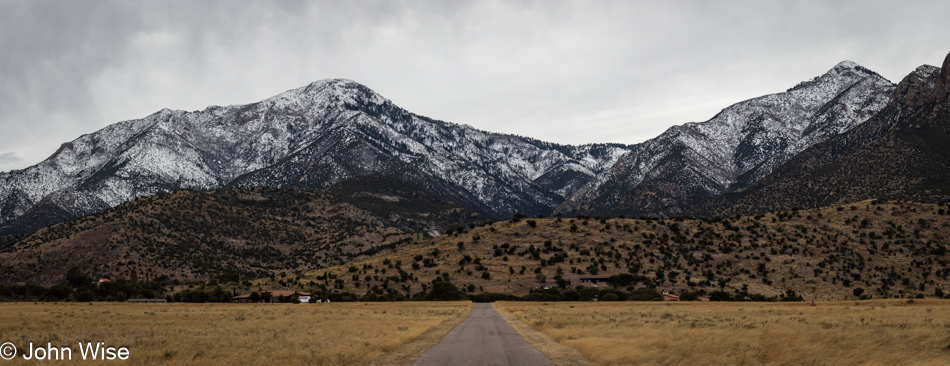
Our old friend Mal de Puerco joined us in the car, and under the gray skies with our seat heaters on, we needed a stop in Sierra Vista for coffee lest we find the car driving itself over the tan grasses more suited for grazing cows than napping pigs. The forecast calls for sun in the afternoon, and so before that, we’ll just mosey along with nary a concern about what to do next, except Caroline is nudging me that our 10-minute coffee stop has now stretched into nearly 30 minutes, so off we go on our trip further south. The mountain on the left is Miller Peak in Hereford, flanked by Carr Peak on the right.

It was almost a coin toss regarding visiting Bisbee or Coronado National Memorial, but Coronado won since we couldn’t remember being there in the past 20 years. It turns out that it’s been almost exactly 20 years since our last visit because my blog showed us that it was back in May 2003 that we were last down here. Two things: back on the left, you can see a hint of blue sky, but the elephant in the room is, why is this sign reading “Smuggle + Flee = Jail” right before the entry to the park?
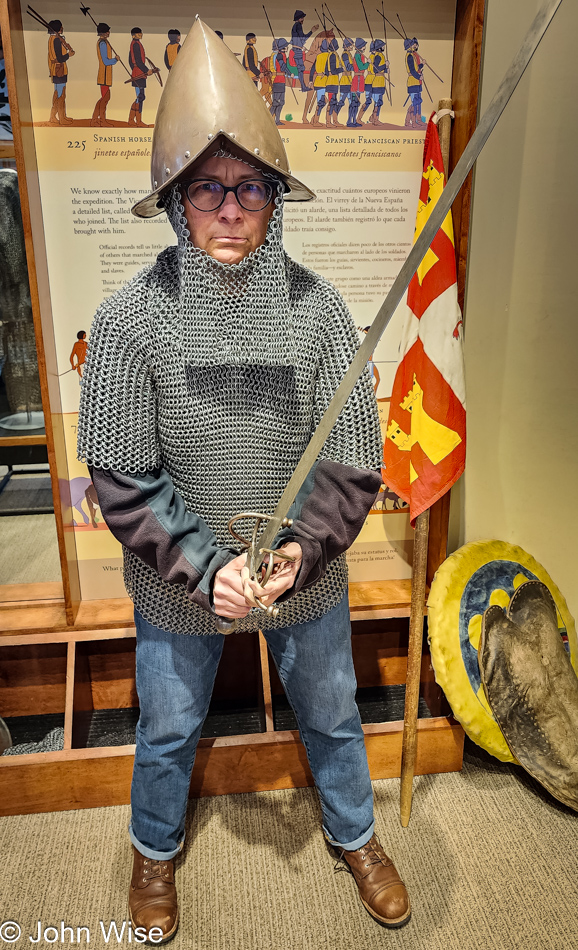
Ten years ago, in a land far, far away stood the imposing figure of Caroline the Warrior donning simulated battle gear at the Frankfurt Historical Museum, but today, we are in the land of Get Real, and you put on an authentic recreation or just get lost. Chain mail armor is heavy-duty stuff with an emphasis on heavy. After getting Caroline into that metal shirt, which felt like it weighed 30 pounds, followed by the mail coif over her head, she opted for the helmet of the Kniggits instead of the more fashionable mohawk style she wore in Germany. Click that link in the top line and scroll down to see what I’m talking about. It turned out that her glasses helped the helmet stay put because after she took them off, the weight of the steel helmet fell onto her nose.
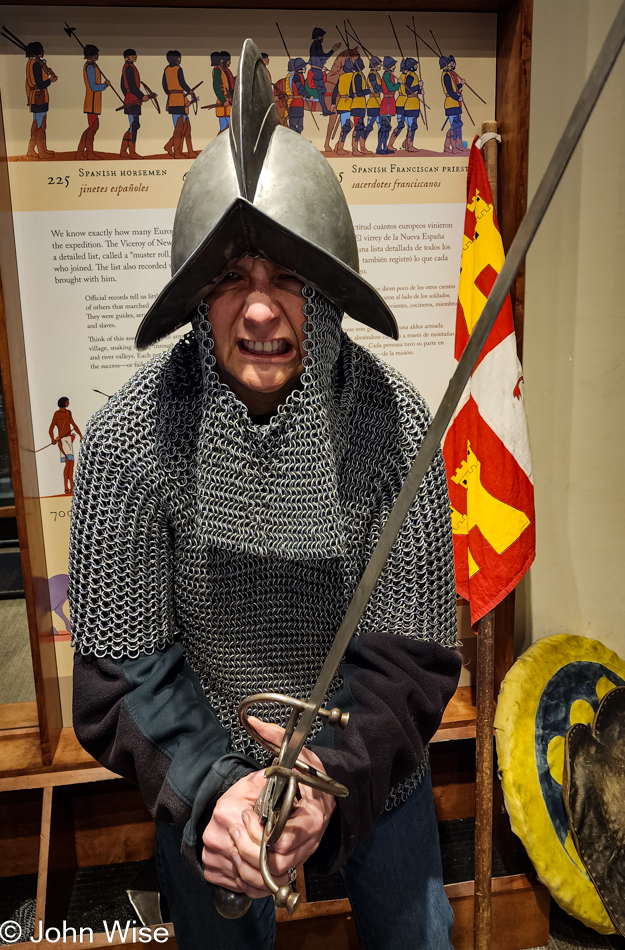
But with that, she was now angry enough at what I was putting her through that she was able to channel a fierce rendition of one of the soldiers traveling with Francisco Vazquez de Coronado back in 1540. Anyone else in the visitors center might have thought us drunken fools from our boisterous laughter. We were locked in side-splitting fits of laughing, the kind that starts to take your breath away and pulls tears from your eyes.
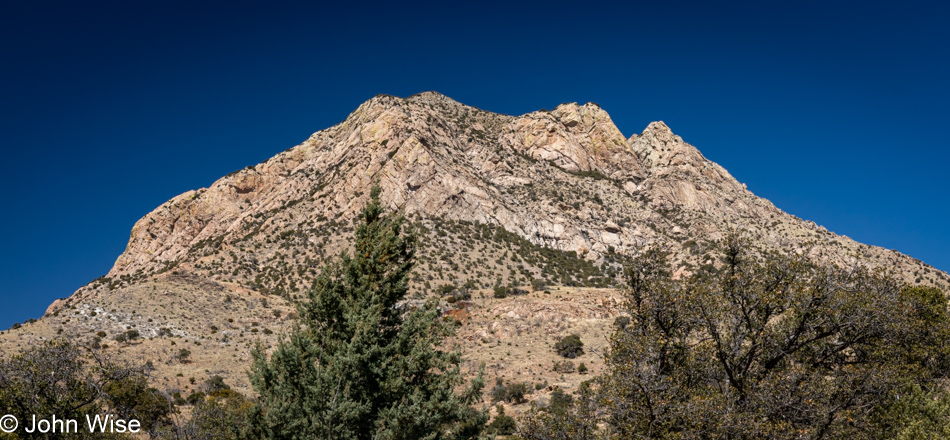
We expected the gray weather to continue, but after indulging in that roaring laugh attack, the weather gods must have recognized that we were ready for joy because when we went back outside, the sun had come out and stayed with us. The view is of Montezuma Peak behind the visitor’s center.

Armed with a Junior Ranger booklet, we took off to see how far we could get on Joe’s Canyon Trail, how far because when I enquired about steep dropoffs on the trail, I was told there might be a couple of spots.

Somehow, I managed to get past this constriction, probably because I’d not had enough of the trail yet, and after more than a couple of months without any hiking, I desperately wanted some serious nature time, and with the weather cooperating, we needed to persevere.
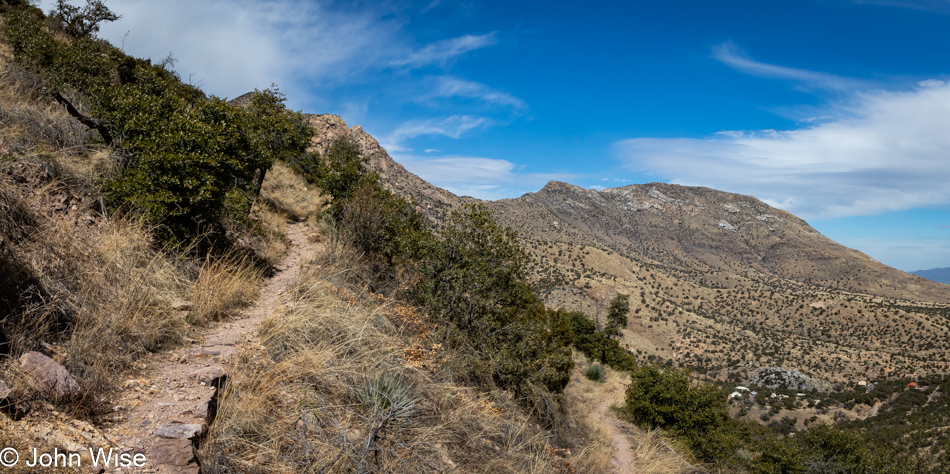
The views up here were spectacular, but after our time on this trail, we would drive up higher towards Coronado Peak and capture even better views of mostly the same sights, so I’m saving what’s out on the horizon until we get there.

We made it to about 600 feet of the 1000 feet of elevation gain Joe’s Canyon Trail should have delivered when I reached the limit of my ability to handle the narrowing trail, and at about 1.5 miles, we turned around for the hike back to the visitors center.
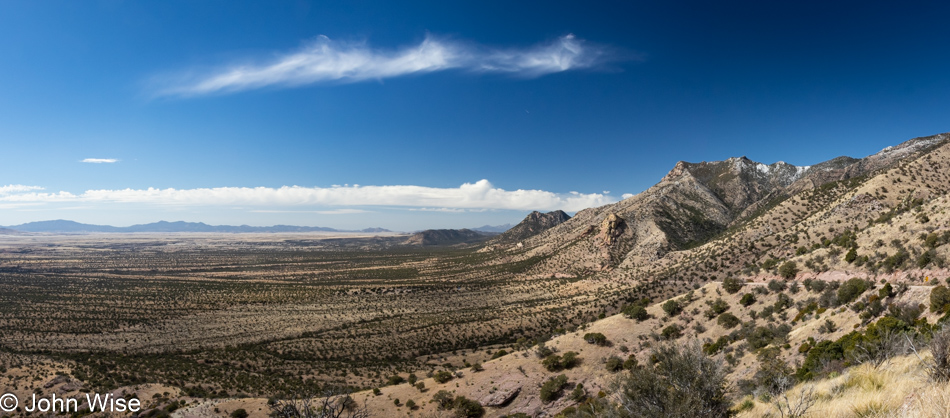
After our hike, we drove up to Montezuma’s Pass for what we would have both sworn was our first visit to this particular vantage point, but my blog would prove us wrong.
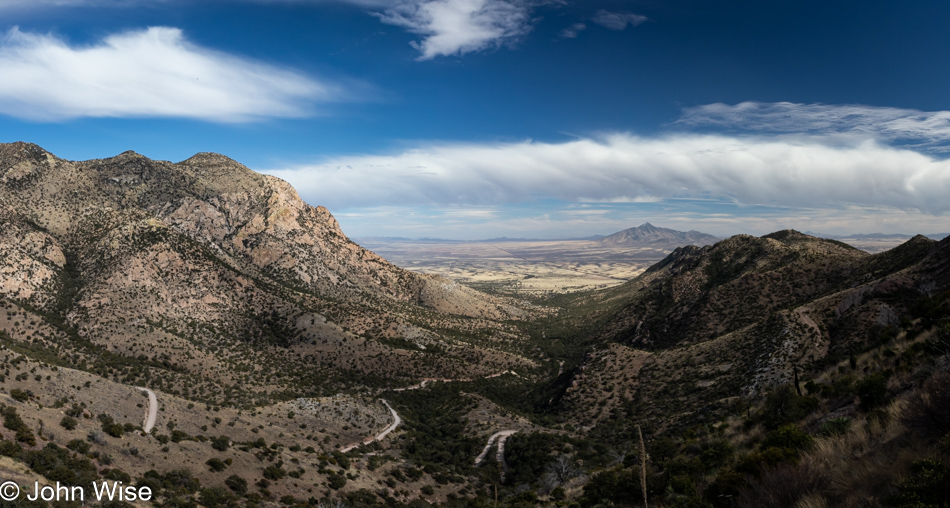
I hadn’t planned on taking our new car on dirt roads quite yet, but there we were at the base of the mountain, facing the choice of babying our pristine Kia Niro with only about 500 miles on it or seizing the day and conquering the mountain on a narrow rocky dirt path to Montezuma Pass and the Coronado Overlook just past that.
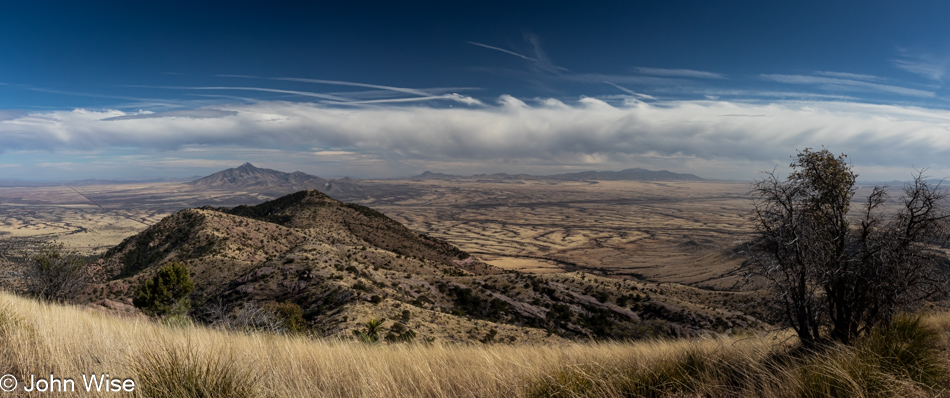
We were on a race against time as the visitors center down below was going to close at 4:00 and Caroline had to turn in her junior ranger booklet before that.

Good thing there was still time to take a selfie up here. The majority of the view behind us is looking into Mexico; I think it’s making me look old.

Caroline made it, meaning not only were we on time, but she possibly answered everything correctly. I say possibly because not a concern was paid about what she scrawled in the booklet which is unfortunate as she really makes an effort to do justice to the questions which, while aimed at children, require a serious bit of work. Her enthusiasm shows how seriously she is taking the honor of being sworn in as a junior ranger, even if it’s her 100th badge.
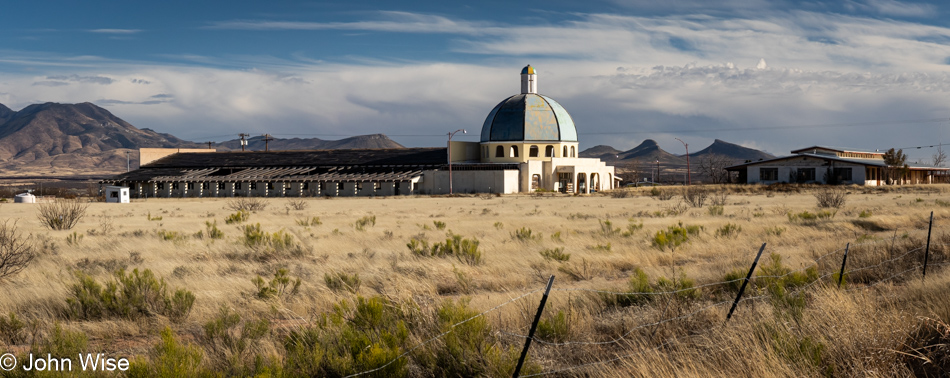
This is the Miracle Valley Bible Church and the site of a shootout between church members and law enforcement that occurred over ten years before the much more famous incident in Waco, Texas, involving the followers of David Koresh. Seeing this again today had me wondering what happened to the photos I took of this place a few years prior, and it turns out that I glossed right over them then because I was still deep in working on the blog posts that were detailing the last trip to Europe we had only returned from in the days prior to visiting Bisbee. Back then, in 2019, I had been invited onto the property by a gentleman who walked along with me, explained a few things about the site, and then allowed me to wander around and take photos. It’s about time for me to share those and get working on that post as soon as I’m done with documenting this weekend.
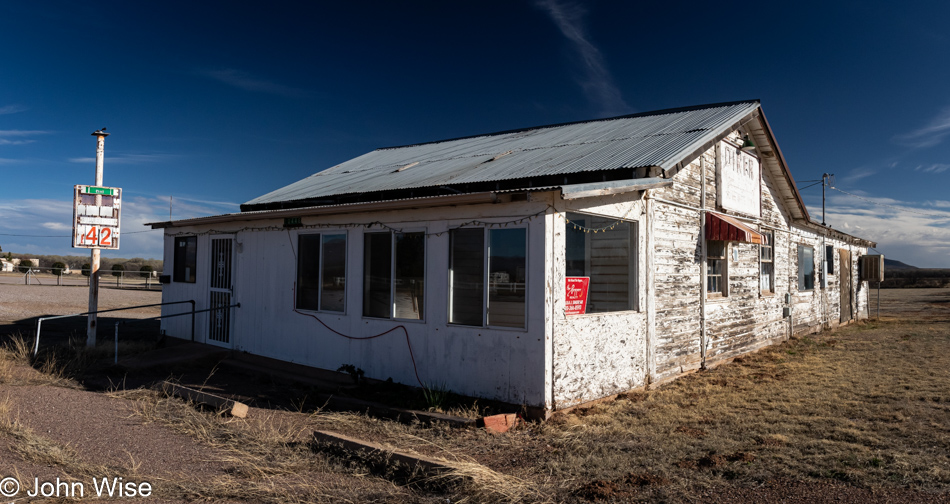
This is what remains of the Palominas Trading Post in Hereford that at one time hosted a gas station back when gasoline was only $1.42 a gallon, and, according to the bleached sign on the west side of the building, this was also a diner. Google StreetView shows the place still open in 2008, but sometime shortly after that, the sign fell down, the newspaper and ice machine disappeared and it has since remained empty. Coldwell Banker has been trying to unload the 2.3 acres and 2,700 sqft of decrepit buildings out in the middle of nowhere for $219,000. How this is valued at more than $1000 is beyond my imagination.

We had one more stop to make today before checking into the Gadsden Hotel down in Douglas and thought we should consider making a reservation for dinner just so they knew were desiring a table. We are at Whitewater Draw in McNeal, Arizona, where last year we saw tens of thousands of Sandhill Cranes; today, we see hundreds, but that’s good enough.
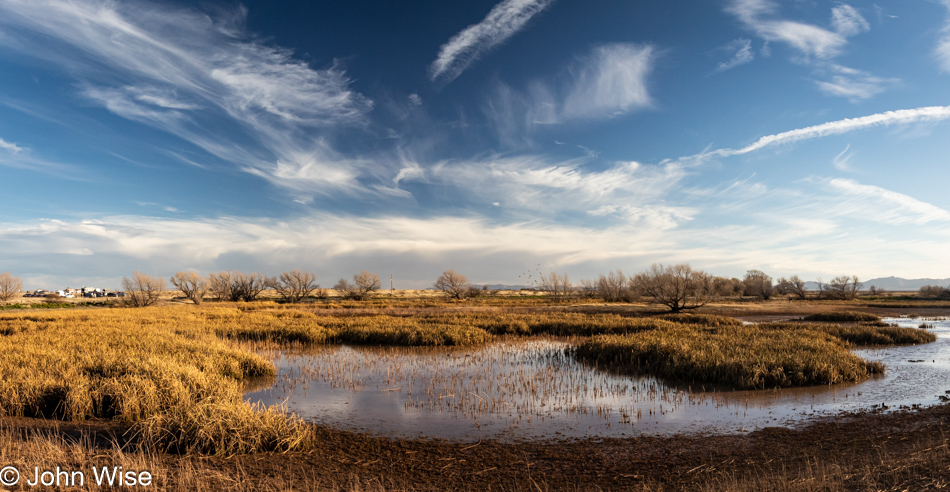
The barn that had been standing near the parking lot on the left last year has since blown down. It was also where the WIFI router for the Crane Cam was housed, so we had no way of looking at the scene prior to our arrival and finding out if the cranes were even on hand. Sadly, the front desk at the Gadsden also didn’t know the status of the birds.

There were lots of ducks plying the shallow waters but getting a photo of one of them was difficult, near impossible, as they had their heads submerged under the surface the majority of the time.

The shadows should let you know that it’s now late in the day, while the inability to see a millimeter into the water suggests it might be turning into a mud puddle in the next week.

Good thing we got a reservation for 7:00 p.m. as we had time to hang out and were rewarded with seeing murmurations of the yellow-headed blackbirds. While we came for the sandhill cranes, it was those little yellow-headed birds that stole the show today.
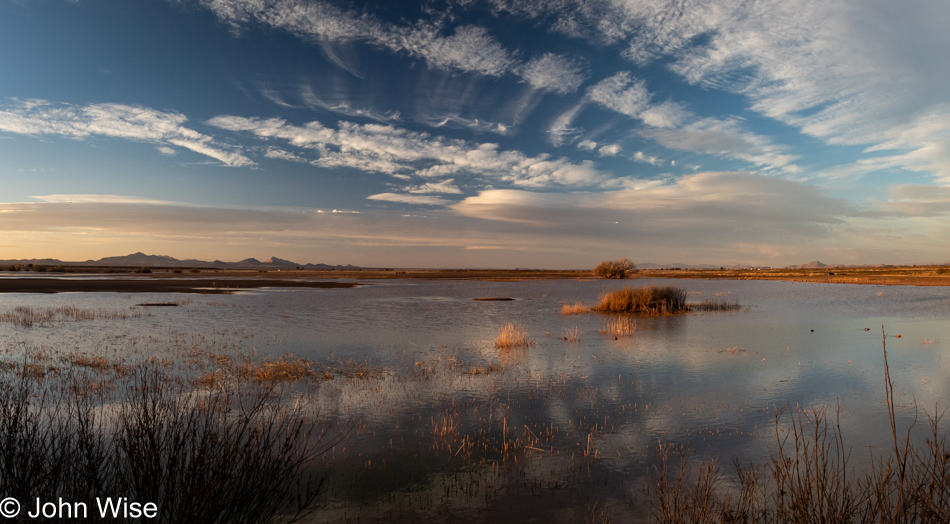
There’s a speck on the left that is one of the few remaining cranes flying away from the lake today, but that’s not what we were focused on; it was the sky and the reflections on the surface of the water.
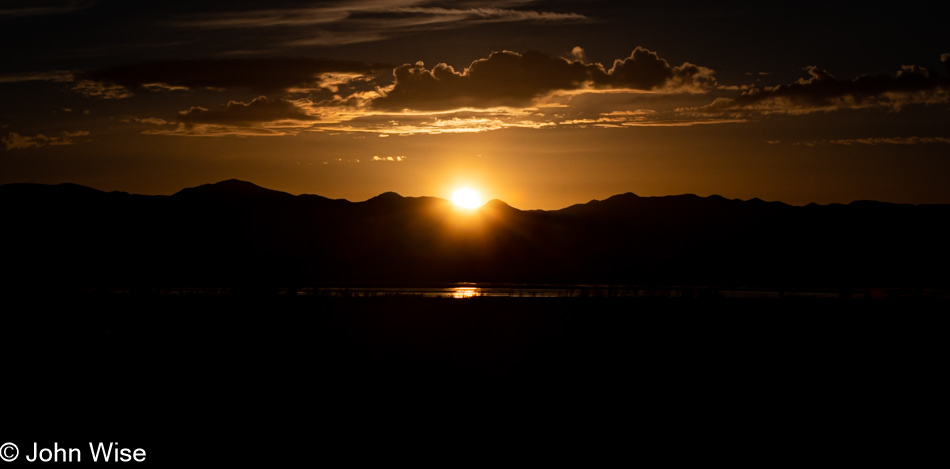
With sunset happening at about 6:20 p.m., I thought we’d have enough time to reach Douglas since it was only about 30 minutes away, but as we made our way towards the parking area, we saw and heard that a very large party of those Yellow-headed Blackbirds were making a commotion to the south of where we’d been. There were thousands of them jostling for branch space on a section of the lake in the late-day shadows.
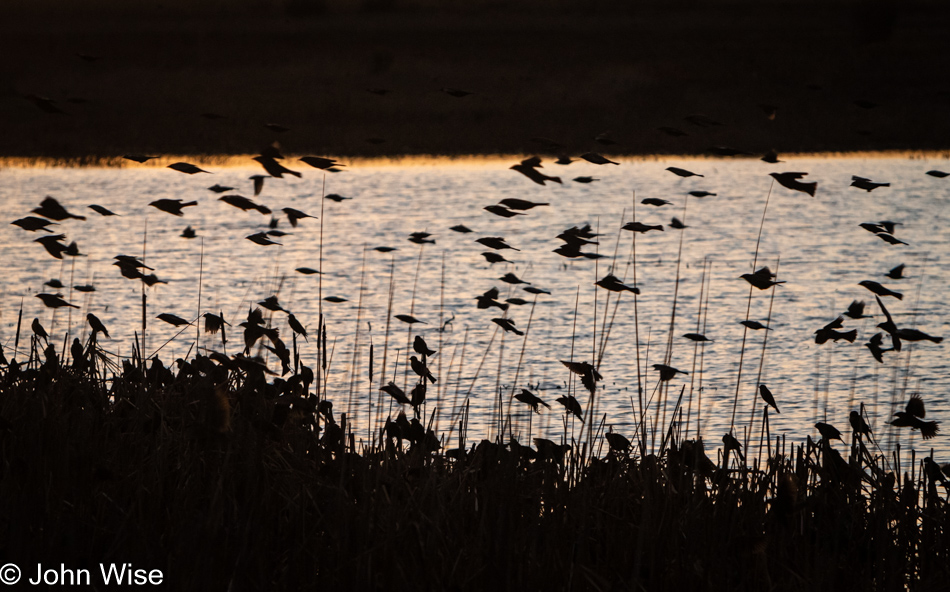
Only a tripod and an F/1.2 aperture lens would have possibly delivered a decent photo of those quick-moving little birds that were darting here and there before the thrush of hundreds of them would lift off simultaneously and readjust the position in ways we cannot begin to understand. Time to go south to our accommodation on the Mexican border.
Once we got to dinner, we were surprised to find that Cesar, who served us breakfast last year nearly to the day, was to be our server for dinner. When I saw him walk up, I remembered him immediately; it took him a solid 15 seconds to rebuild the memory. Cesar lives in Mexico and is still studying to be a nurse, just as he was last year. He’s since purchased a mirrorless camera and is getting deeper into photography.
Our room is a suite, and it’s spectacular. While my eyes are growing heavy as I try to get the more important impressions and details written down, Caroline has been luxuriating in the whirlpool in our room, and though I wish I could have been more prolific with the words, my eyes are falling shut as I push the computer to the side.
